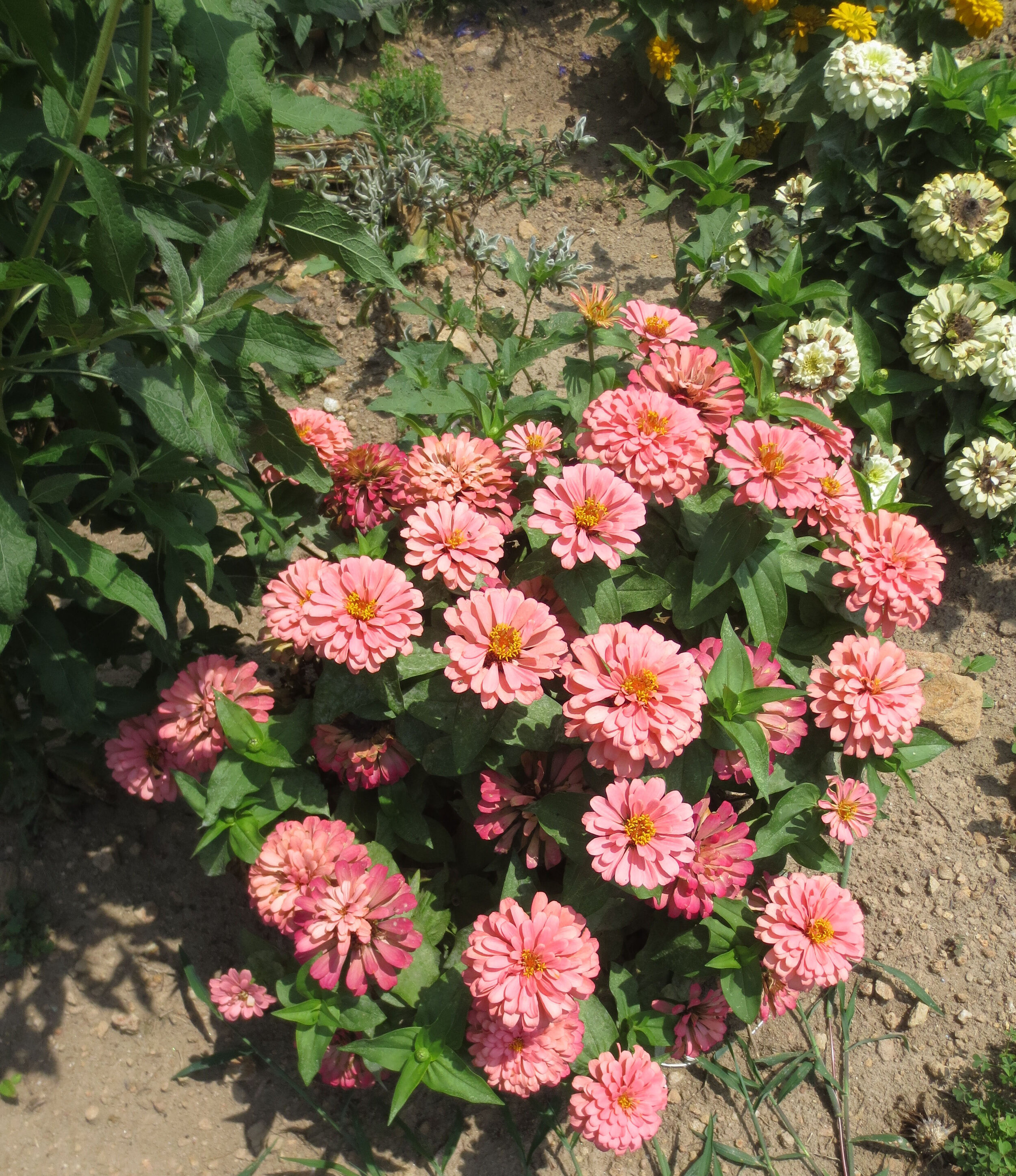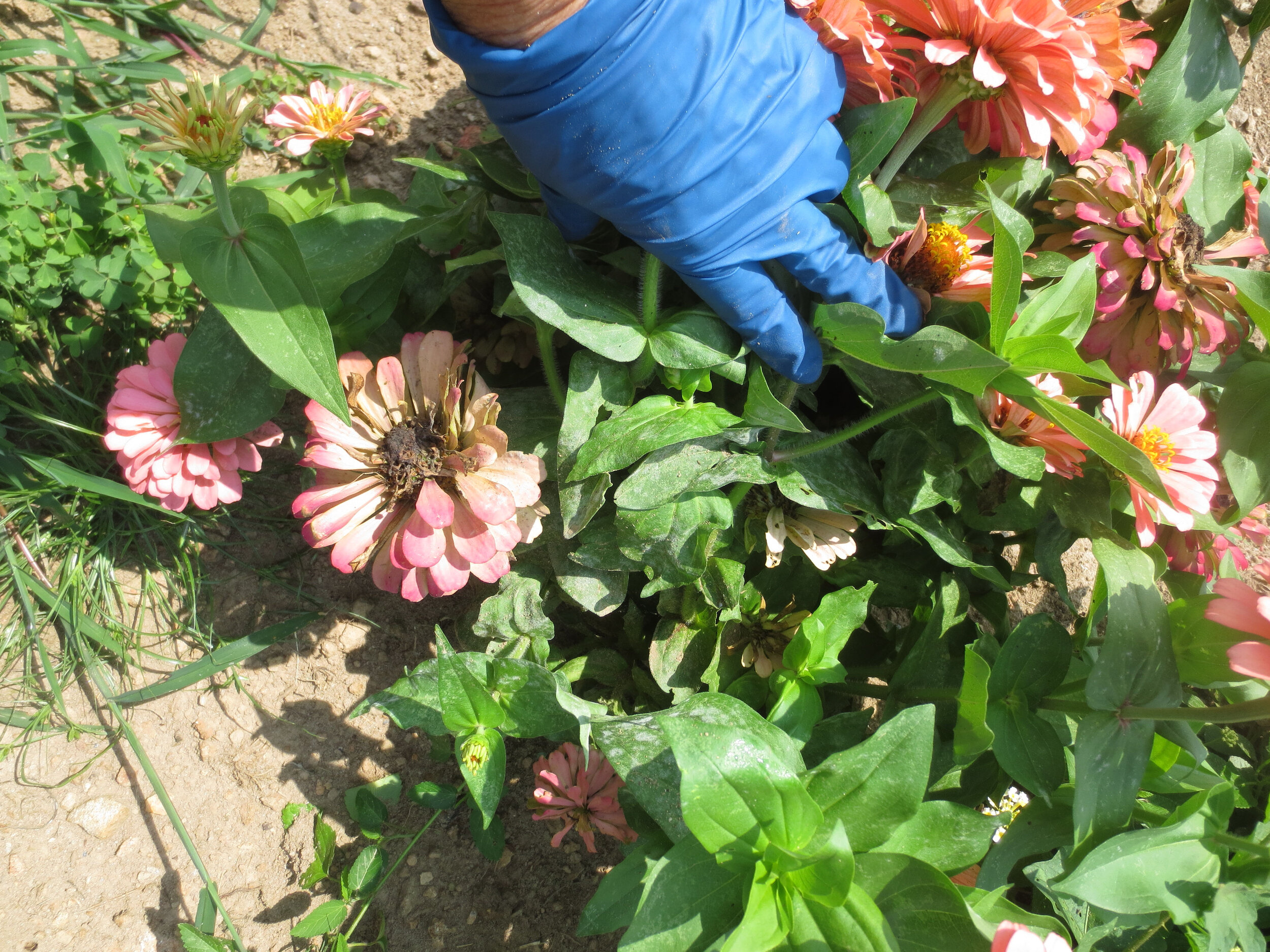To keep a small garden from looking chaotic, show restraint with the number of flower colors. Smallish gardens can look fabulous with only two colors. This is not to say only two types of plants. Yellow and purple flowers pair well and give the gardener a large number of choices. Repeating the same flower colors but using different sizes of blooms and leaf forms provides attractive contrasts. Because flowers bloom on their own timeline, the use of different plants with the same bloom shades will keep the garden colorful even if some of them are taking a blooming siesta.
For my own small courtyard garden, I decided all perennials and flowering shrubs would be in shades of yellow, coral, and purple. To lure pollinators, I included yellow goldenrod (Solidago) and brown-eyed Susans (Rudbeckia triloba) in the dryest area, and yellow rain lilies in the damp areas near the drainage catch basin. For coral shades, I used Drift roses (small, shrubby, lower maintenance than most roses), coral penstemons, a dwarf Red Hot Poker (Kniphofia ‘Poco Red’) which is more coral than red, and a couple unknown varieties of daylily. For the purples, I chose sterile, dwarf Pugster® butterfly bushes (Buddleia), purpleheart (Tradescantia), purple coneflowers (Echinacea purpurea), and lavender-flowered Society Garlic (Tulbaghia violacea). All these plants attract numerous butterflies and hummingbirds.
I wasn’t certain that the Cuphea ‘Candy Corn’ that I planted last year would overwinter, but they did and now the yellow and orange flowers look right at home between the corals and yellows. The Gaillardia ‘Spin Top Red’ I planted last fall is more red than coral, but it has bloomed so lavishly that it will remain. Several varieties of Calla lilies in the chosen colors have not begun flowering yet.
This being a first-year garden, there were a number of empty holes in the layout, so I started annuals from seed to fill in the gaps. Next year, those gaps will be smaller as the shrubs and perennials gain size. By year three, annual use will be at a minimum. For now, yellow Melampodium, coral Zinnia, coral Salvia, purple Gomphrena and purple Salvia are providing abundant color. These were chosen not only for their hues but because they flower like mad all summer long and require little in the way of maintenance, other than the occasional removal of spent flowers (Zinnia and Salvia).
My past gardens have never featured coral shades, but I’m loving this color in the new beds. Plans are underway to add peachy/coral shades of Yarrow, Alstroemeria, Lycoris (“Hurricane Lily”), and Chrysanthemum to extend the chosen color palette into autumn. I’m including a few photos of the coral plants.










